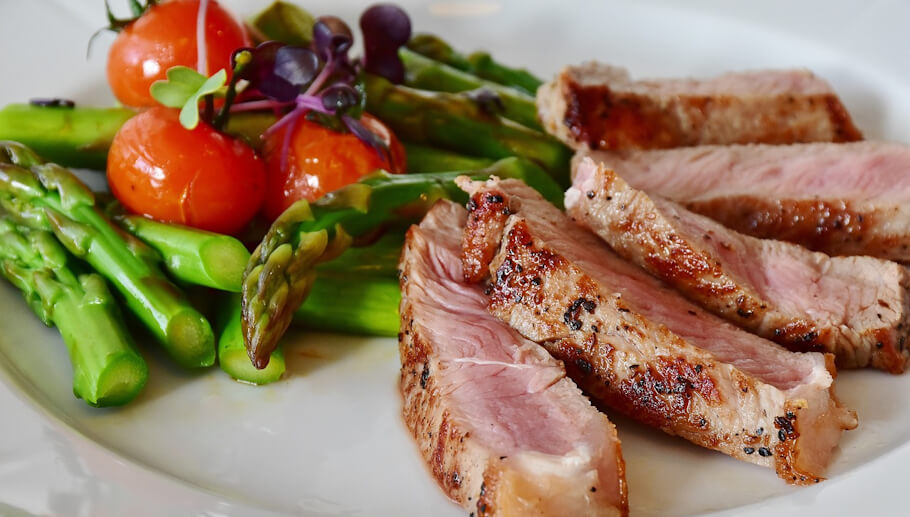
Ian C. Langtree – Content Writer and Editor at Disabled World
Published: 07/07/2024
Type of publication: Informative
Content: Summary – Introduction – Major – Related
Synopsis: The NOVA food classification system is a framework that classifies foods into four groups based on the degree and purpose of industrial processing they undergo. Developed by researchers at the University of São Paulo, Brazil, in 2009, this system aims to provide a clearer understanding of the health implications associated with different types of food processing. The NOVA food classification system has generated mixed reactions from experts in the fields of nutrition, food science, and public health.
Introduction
NOVA helps people “grouping foods according to the degree and purpose of processing to which they undergo. Food processing, as identified by NOVA, involves physical, biological and chemical processes that occur after food is separated from nature and before it is consumed or used in the preparation of dishes and meals.” The NOVA food classification system has been used worldwide in nutrition and public health research, policy and guidance as a tool to understand the health implications of different food products.
Main Summary
In the NOVA classification system, descriptive criteria are used to assign foods to one of four groups based on criteria related to processing. Foods can be classified in one of four ways:
The Golden rule: “Always prefer natural or minimally processed foods and freshly made dishes and meals to ultra-processed foods.”
Group 1: Unprocessed or minimally processed foods
Unprocessed or natural foods are obtained directly from plants or animals and do not undergo any alteration after being extracted from nature.
Minimally processed foods are natural foods that have undergone cleaning, removal of inedible or unwanted parts, fractionation, grinding, drying, fermentation, pasteurization, cooling, freezing, or other processes that may subtract some of the food but do not add oils, fats, sugar, salt, or other substances to the original food.
Some examples of unprocessed or minimally processed foods include:
- Eggs.
- Coffee.
- Dry fruits.
- Tea, herbal infusions.
- Tap, spring and mineral water.
- Fresh and dried herbs and spices.
- Wheat grains, oats and other cereals.
- Lentils, chickpeas, beans and other legumes.
- Fresh or pasteurized milk; unsweetened yogurt.
- Nuts, peanuts and other seeds without salt or sugar.
- Fresh and dried mushrooms and other fungi or algae.
- Fresh and dried herbs and spices (e.g. oregano, pepper, thyme, cinnamon).
- Fresh or pasteurized fruit or vegetable juices, without sugar or other added substances.
- Vegetables, fruits, potatoes and other natural roots and tubers, packaged, cut, chilled or frozen.
- Bulk or packaged grains, such as brown, white, parboiled or whole grain rice, corn kernels or wheat grains.
- Fresh, chilled or frozen meat, poultry, fish and seafood, whole or in the form of fillets, steaks and other cuts.
- Semolina, flakes and flours made from corn, wheat or oats, including those fortified with iron, folic acid or other nutrients lost during processing. Dry or fresh pasta, couscous and polenta made from water and the semolina, flakes and flours described above.
Group 2: Oils, fats, salt and sugar
Group 2 is also called Processed Culinary Ingredients. These are products extracted from natural foods or nature through processes such as pressing, grinding, crushing, pulverizing and refining. They are used in homes and restaurants to season and cook foods to create a variety of delicious dishes and meals of all kinds, including broths and soups, salads, cakes, breads, pastries, sweets and preserves.
Use oils, fats, salt and sugar in small amounts to season and cook foods and create culinary preparations. When used in moderation in culinary preparations based on natural or minimally processed foods, oils, fats, salt and sugar contribute to a varied and delicious diet without unbalancing it nutritionally.
Some examples of processed culinary ingredients include:
- Lard.
- Butter.
- Coconut fat.
- Syrup extracted from the maple tree.
- Honey extracted from honeycombs.
- Starches extracted from corn and other plants.
- White sugar, brown sugar and other types of sugar and molasses obtained from sugar cane or beet.
- Oils made from seeds, nuts and fruits, including soy, corn, palm oil, sunflower oil and olives.
- Refined or coarse salt, mined or extracted from the sea, and any food that combines two of these, such as salted butter.
Group 3: Processed foods
Processed foods are products made by industry using salt, sugar, oil or other substances (Group 2) added to natural or minimally processed foods (Group 1) to preserve them or make them more palatable. They are derived directly from foods and are recognized as versions of the original foods. They are usually consumed as part of or as a garnish in culinary preparations made with natural or minimally processed foods. Most processed foods have two or three ingredients.
Some examples of processed foods include:
- Bacon.
- Dried meat.
- Coconut fat.
- Freshly made cheeses.
- Salted or sugary nuts and seeds.
- Salted, dried, smoked or cured meat or fish.
- Fruits in syrup (with or without added antioxidants).
- Tomato extract, pastes or concentrates (with salt and/or sugar).
- Fermented alcoholic beverages such as beer, cider and wine.
- Canned fish, such as sardines and tuna, with or without added preservatives.
- Freshly baked bread (unpackaged) made with wheat flour, yeast, water and salt.
- Canned or bottled vegetables or legumes preserved in salt (brine) or vinegar, or pickled.
Group 4: Ultra-processed foods
Ultra-processed foods (UPF) (also called predigested foods) are industrial formulations made wholly or mainly from substances extracted from foods (oils, fats, sugar, starch and proteins), derived from food components (hydrogenated fats and modified starch) or synthesized in laboratories from food substrates or other organic sources (flavour enhancers, colourants and various food additives used to make the product hyperpalatable). Manufacturing techniques include extrusion, moulding and pre-processing by frying. Beverages may be ultra-processed. Group 1 foods are a small proportion of ultra-processed products, or are even absent from them.
Some examples of ultra-processed foods include:
- Cookies (biscuits).
- Sweetened juices.
- Margarine and spreads.
- Energy and sports drinks.
- Breakfast cereals and bars.
- Ice cream and frozen desserts.
- Cakes, pies and cake mixes.
- Pre-prepared pizza and pasta dishes.
- Dairy drinks, including chocolate milk.
- Prepared hamburgers, hot dogs, sausages.
- Cola, soft drinks and other carbonated beverages.
- Other animal products made from remains.
- Fatty, sweet, salty or savory packaged snacks.
- Packaged breads, hamburger and hot dog buns.
- Pre-prepared chicken and fish nuggets and sticks.
- Chocolates, candies and confectionery in general.
- Precooked (packaged) meat, fish and vegetables.
- Sweetened and flavoured yoghurts, including fruit yoghurts.
- Distilled alcoholic beverages such as whiskey, gin, rum, vodka, etc.
- Infant formulas, drinks and meal replacement shakes (e.g. ‘Slim Fast’).
- Canned, packaged, dehydrated (powdered) and other “instant” soups, noodles, sauces, desserts, drink mixes and condiments.
- Baked goods made with ingredients such as hydrogenated vegetable fat, sugar, yeast, whey, emulsifiers and other additives.
Continued…
Notable criticisms of the NOVA food classification system
Some food scientists argue that the NOVA system lacks a sound scientific basis and does not accurately reflect the complexities of food processing and its effects on health. The system is criticized for making broad generalizations about the healthiness of foods based primarily on the level of processing rather than nutritional composition.
Critics argue that NOVA oversimplifies food classification by grouping various products based on the level of processing rather than their nutritional content. For example, it places high-fibre breakfast cereals, plant-based burgers and alcoholic beverages in the “ultra-processed” category, even though their nutritional profiles are very different. NOVA is also accused of overlooking the potential benefits of food processing, such as improved food safety, extended shelf life and improved nutrient bioavailability. Critics argue that not all processing is harmful to health.
Some researchers criticize studies using NOVA for relying too heavily on correlations between ultra-processed food consumption and health outcomes without establishing clear causal mechanisms.
Conclusion
While the above critiques highlight potential flaws in the NOVA system, it is worth noting that some researchers still see value in the classification. They argue that, despite its limitations, NOVA draws attention to important issues related to modern food production and consumption patterns. The debate surrounding NOVA highlights the complexity of food classification and the need for nuanced approaches to understanding the relationship between food processing, nutrition, and health.
NOVA Food Classification System Reference Material
Food groups and referenced examples were adapted from the NOVA food classification system, designed by the Center for Epidemiological Studies in Health and Nutrition, School of Public Health, University of Sao Paulo, Brazil.
Related Posts
Share this information with:
𝕏.com Facebook Reddit
Page information, citations and disclaimer
Disabled World is an independent disability community founded in 2004 to provide news and information to people with disabilities, seniors, their families and caregivers. We’d love for you to follow us and connect with us on social media!
Cite this page (APA): Langtree, IC (2024, July 7). Understanding NOVA: A modern approach to food categorization. Disabled worldRetrieved July 9, 2024 from www.disabled-world.com/fitness/nutrition/foodsecurity/nova.php
Permanent link: Understanding NOVA: A modern approach to food categorizationThe NOVA food classification system is a framework that classifies foods into four groups based on the extent and purpose of the industrial processing they undergo.
Disabled World provides general information only. The materials presented are never intended to be a substitute for qualified medical care. Any third party offers or advertisements do not constitute an endorsement.






